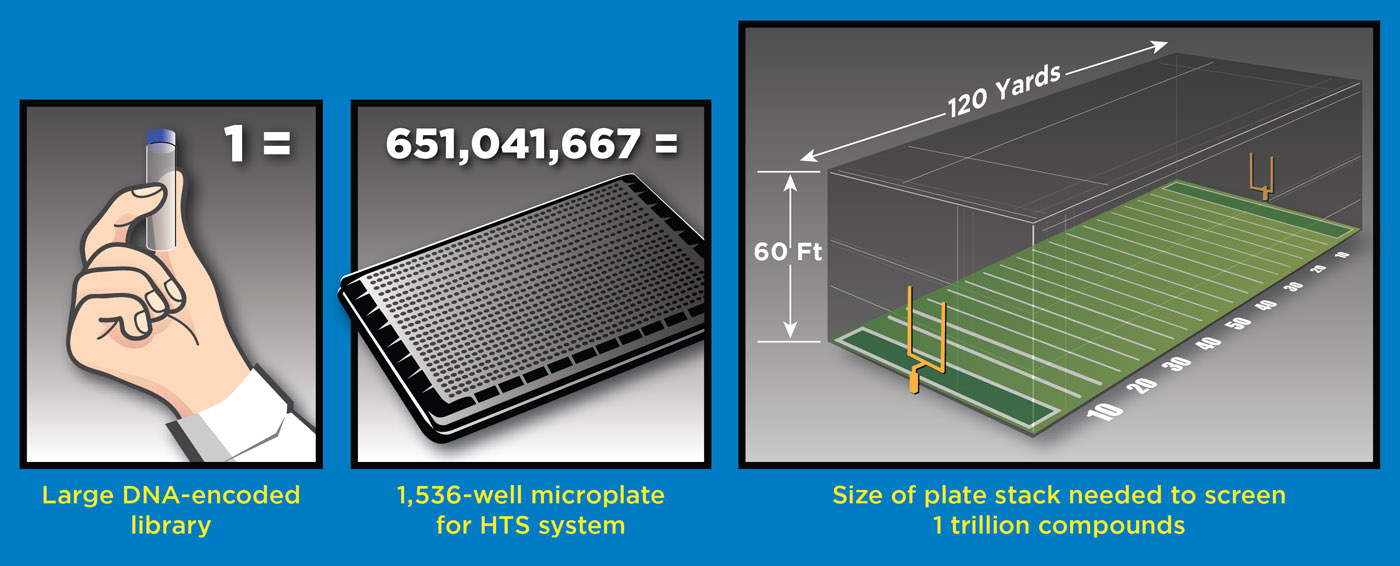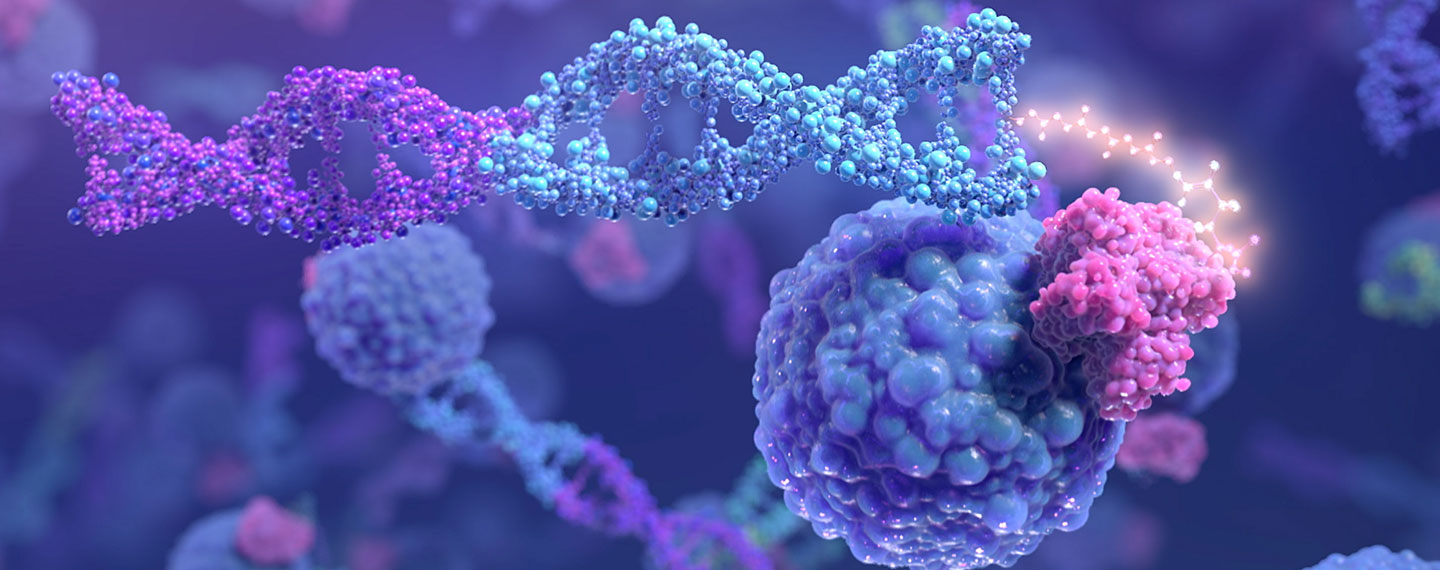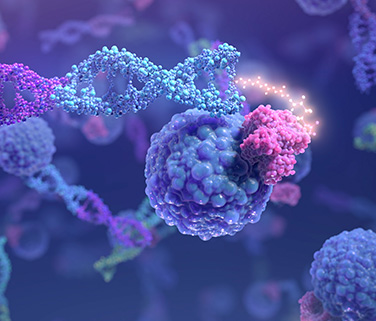Show Transcript
Sometimes, truly amazing science doesn’t look very amazing. Nowhere is that more true than with a DNA-encoded library (DEL). Outwardly, DEL technology looks like a few drops of liquid in a small plastic test tube. But this mundane appearance masks a remarkable drug discovery platform that can cast a net as much as a million times larger than conventional screening technology.
For Amgen’s Research organization, DEL could be the key to advancing the next big idea in small molecule drug discovery—bispecific compounds that can spur proteins to eliminate hard-to-drug targets. To pursue this vision aggressively, Amgen acquired Nuevolution, a DEL pioneer with deep experience and superior technology. The Denmark-based team of about 45 scientists and professionals will now be known as Amgen Research Copenhagen (ARC).
Before buying the company, Amgen and Nuevolution collaborated on research that yielded promising leads against a challenging cancer target. “Given the power of DNA-encoded libraries, we realized we should be using them in all of our small molecule drug discovery projects,” said Ray Deshaies, senior vice president of Global Research.
“We surveyed the whole landscape and concluded that Nuevolution was clearly the best company. In working with them, we learned that world leadership in this realm is not about technology alone, it’s about the people. Multiple companies have DEL technology, and we could have chosen to do multi-target deals or technology transfers. But that wouldn’t have given Amgen the most valuable resource—the passionate and experienced team of scientists in Copenhagen.”
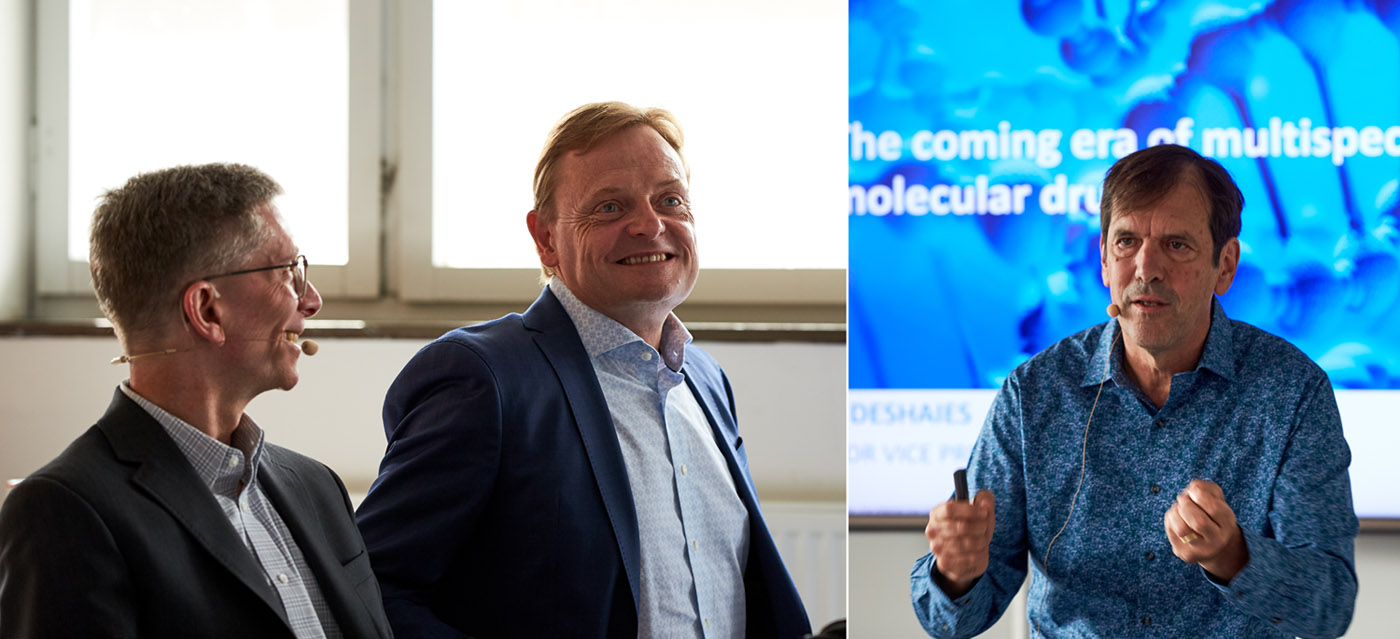
(Left image) Amgen R&D head Dave Reese (l.) and Alex Gouliaev share a light moment at a presentation to staff at Amgen Research Copenhagen. (Right image) Ray Deshaies presents on the potential of DEL technology to help chemists design multispecific small molecules that use the body's own biological mechanisms to attack hard-to-drug targets.
“Our approach has really proven its value over the last 18 years in multiple partnerships, including the successful partnership with Amgen,” said Alex Gouliaev, former CEO at Nuevolution, now vice president, Amgen Research Copenhagen. “We believe Amgen represents the perfect home due to its innovative approach to discovery and a cultural match that offers a good fit for our team.”
The Secret Sauce
Screening technology plays a major role in small molecule drug discovery, where the general goal is to find “hits”—compounds that interact with drug targets. In conventional high-throughput screening systems, compounds are stored, tracked, and tested in microplates with 384 or 1536 wells per plate. Robots transfer compounds from storage plates to test plates that hold a drug target, and various technologies are used to read the strength of the resulting interactions and identify hits that chemists can then optimize to create investigational drugs.
A conventional library can hold several million distinct compounds, but time and cost constraints make it difficult to go beyond that scale. In DEL technology, those constraints don’t apply. Each individual compound is linked to a unique strand of DNA, which functions like a barcode to identify that compound. The tagging allows diverse compounds to be stored and tested together, so plates are no longer needed to differentiate compounds on a spatial grid. Given the physical size of chemical compounds—quadrillions of drug-like molecules can fit in a single drop of liquid—even the largest libraries can be stored in a few milliliters of liquid.
“You can build a library that holds millions, billions, or even trillions of compounds and screen them all at once as a mixture against a protein of interest that’s attached to a resin bead,” said Margaret Chu-Moyer, vice president, Research, and head of Chemistry, Characterization & Technology. “You can identify those compounds that are binders by sequencing their DNA barcodes. That’s the secret sauce of this technology.”
“By focusing on building only high-quality libraries, we aim to increase the probability of finding really useful compounds with good properties and a tractable route forward for the medicinal chemists,” said Thomas Franch, former chief scientific officer at Nuevolution, now an executive director at ARC. “Every molecule in our libraries is designed from scratch, and the chemistry has been optimized to produce it. This makes hit synthesis and optimization easier, giving fast access to many follow-up compounds.”
With DEL technology, you can make and screen libraries of up to a trillion or more compounds. What would it take to screen that many compounds with a conventional system? Using standard 1,536-well plates, you’d need a stack of plates large enough to cover an American football field―to a height of 60 feet. At the standard speed of 100,000 compounds a day, completing one full screen would take more than 27,000 years.
“The perfect technology”
DEL technology has some limits. It can identify compounds that bind to a target, but it’s not designed to provide functional data, such as how much a compound inhibits or increases a target’s biological activity. For those insights, we still need the versatility of conventional high-throughput screening technology, and the scientists who design and execute these functional assays will continue to play a big role in drug discovery at Amgen.
But for certain emerging modalities, like PROTACS (proteolysis targeting chimeras), binding affinity is the main success factor. PROTACs are an example of a new paradigm in drug discovery, where the goal is to leverage existing biological machinery to eliminate a target that would be hard to inhibit directly. Deshaies coined the term “induced proximity inactivation” to refer to this bispecific activity, which can be built into small molecules as well as proteins, such as the BiTE® molecules (bispecific T cell engagers) in Amgen’s cancer pipeline.
“The idea is to bring two things together—a target and an effector,” said Deshaies. “In the case of PROTACs, the effector is an enzyme called ubiquitin ligase, which attaches ubiquitin to the target protein to mark it for degradation in the proteasome. But we could think of all sorts of clever schemes for inhibiting proteins by forcing them into proximity with other proteins that will alter their activity. With this approach, you don’t need functional readouts to identify good hits. You only need to bring two things together, so you just need binders. And DEL is the perfect technology for enabling these induced proximity mechanisms.”
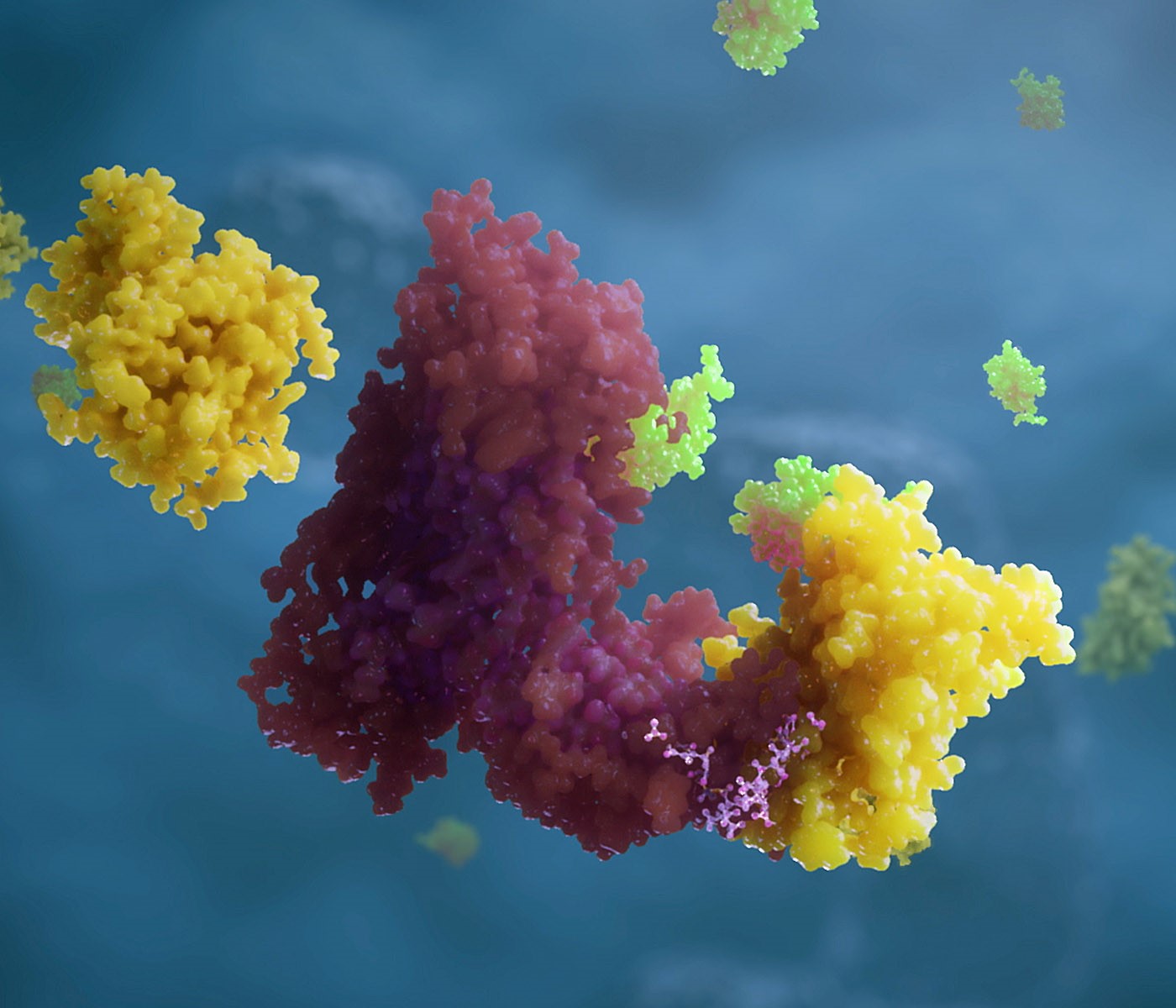
A PROTAC (small pink molecule, lower center) works by bringing a target protein (shown in yellow) into proximity with enzymes known as ubiquitin ligases (purple). Once in proximity, the enzyme attaches a small protein called ubiquitin (green) to the target protein, which marks the target for degradation.
60,000 Building Blocks
DNA-encoded libraries are built with combinatorial chemistry, which works by bringing chemical fragments together to generate unique structures. The industry has employed this tool to build libraries for decades, but DEL breathed new life into the technology by solving many of the practical, physical challenges posed in managing huge numbers of distinct compounds. “Using DNA to tag chemical fragments and record synthetic steps enabled combinatorial chemistry to live up to its potential,” said Vic Cee, research director, Medicinal Chemistry.
Not only is ARC’s fragment collection the largest in the DEL field—about 60,000 building blocks—but it is also well-characterized and curated. “They are really careful about understanding every one of the chemical fragments they have, and what kind of reactions it will go into and how it will perform in general,” said Cee.
Initially with DEL technology, there was a push from the pharmaceutical industry to create the biggest libraries possible by adding more and more steps to the chemical synthesis process. The problem with this approach is that “it gives you large and complex compounds that aren’t very drug-like,” said Gouliaev. “Early on, we decided to go in a completely different direction toward building libraries with fewer reactions to produce smaller compounds. But to do that well, you need to create a huge, diverse collection of drug-like fragments, which required a massive number of tests as well as employees who could solve logistical challenges on a day-to-day basis.”
The success of that strategy was one of the things that made Nuevolution so attractive to Amgen. Moreover, ARC also excels at optimizing small molecules by quickly generating new compounds that are structurally similar to an initial hit. “Nuevolution invented methods for making molecules at small scale and in parallel,” said Ray. “So instead of making 200 new molecules one by one, they can make them all at once in one fell swoop. That’s a huge advantage.”
Amgen has a strong record of acquiring smaller research companies and weaving their technology and talent into the R&D organization, from the fully human monoclonal antibodies that originated at Amgen Research Burnaby (formerly Abgenix) to the BiTE® molecules pioneered at Amgen Research Munich (formerly Micromet). Deshaies said he was equally confident that Amgen Research Copenhagen would deliver a steady stream of promising leads, which our chemists, including those at ARC, can transform into medicines patients are waiting for.
“There’s an almost limitless number of potential combinations we can envision for induced-proximity inactivators. Our only limit will be our own creativity.”
